The Sago Palm, scientific name is Cycas Revoluta.
Often in life things are called one thing and are really another. The tomato for example is a fruit of the tomato plant but is considered a vegetable when used in cooking. The Sago Palm is not a palm at all and yet that's what someone a long time ago called it and the name stuck because of its palm-like features.
The Sago Palm has a palm like trunk and palm-like fronds but it's actually a Cycad.
They appeared on the earth during the Paleozoic Era from 350 to 250 million years ago, before the flowering plants appeared. They were dominant plants in the Mesozoic Era and coexisted with dinosaurs. For this reason these plants are sometimes referred to as “living fossils”, and the Mesozoic Era is referred to as the “Age of Cycads”. quote from SagoPalmTree.net
Now that we've got that out of the way...these are some very cool plants!
New fronds are very soft and pliable and each individual leaflet on the frond is tightly curled up. A close-up of the leaflet curls was the photo of the day last week (POTD - Sago Palm).
Here are some of those fronds slowly opening up.
The last part of the scientific name revoluta "...was given to this species because of the revolute (to curl back) nature of the leaflets; the edges roll under the leaflet." source
That's the part that got me hook, line and sinker into this whole investigation of the plant - those little curls. I guess it was even a hook to the horticulturalists that named it.
At the Mayo Clinic there were three Sago Palms in a row all in different stages of development. A male cone has formed after the new set of leaves has already opened. The middle one is in the beginning stages of a new set of leaves and the closest one on the right has fully opened, brand new leaves that are still spring green and soft as can be.
Here is the male cone that has come up from the center of the Sago Palm. These plants need to be about 15 - 20 years old before they bloom and I am guessing that the male cone, seen here, is considered the bloom.
It looks like a giant brand new pine cone. Guess that's why they are a relative to the pine tree. The little nubs open up as it matures and pretty soon will release pollen. (This is a different cone from the one above - I was able to get closer to this one.)
The above photo of the female bloom is from Jungle Music Palms and Cycads.
The female Sago Palm has a totally different look to it when it blooms. It's like a frilly cabbage with red seeds hidden inside. In order for Sago Palms to propagate they need to have a male and a female plant t. Insects can spread the pollen, but they are also easily pollinated with a little bit of human interaction.
Sago Palms are one of the most propagated and sold cycad in the world. The life span of these plants can be hundreds to thousands of years. Can you imagine having a thousand year old plant in your yard? Goodness, I had no idea. The Sago Palm that we had at our previous home was a female. At the time I had no idea that there was any other way for that plant to grow.
I hope you enjoyed the information about the Sago Palm. I gleaned most of my information from these three sites. Rhapis Gardens, Jungle Music Palms and Cycads and SagoPalmTree.net. All of the photos are from my collection with the exception of the last photo with its credit below.
Hope you have a great day!
Kristin

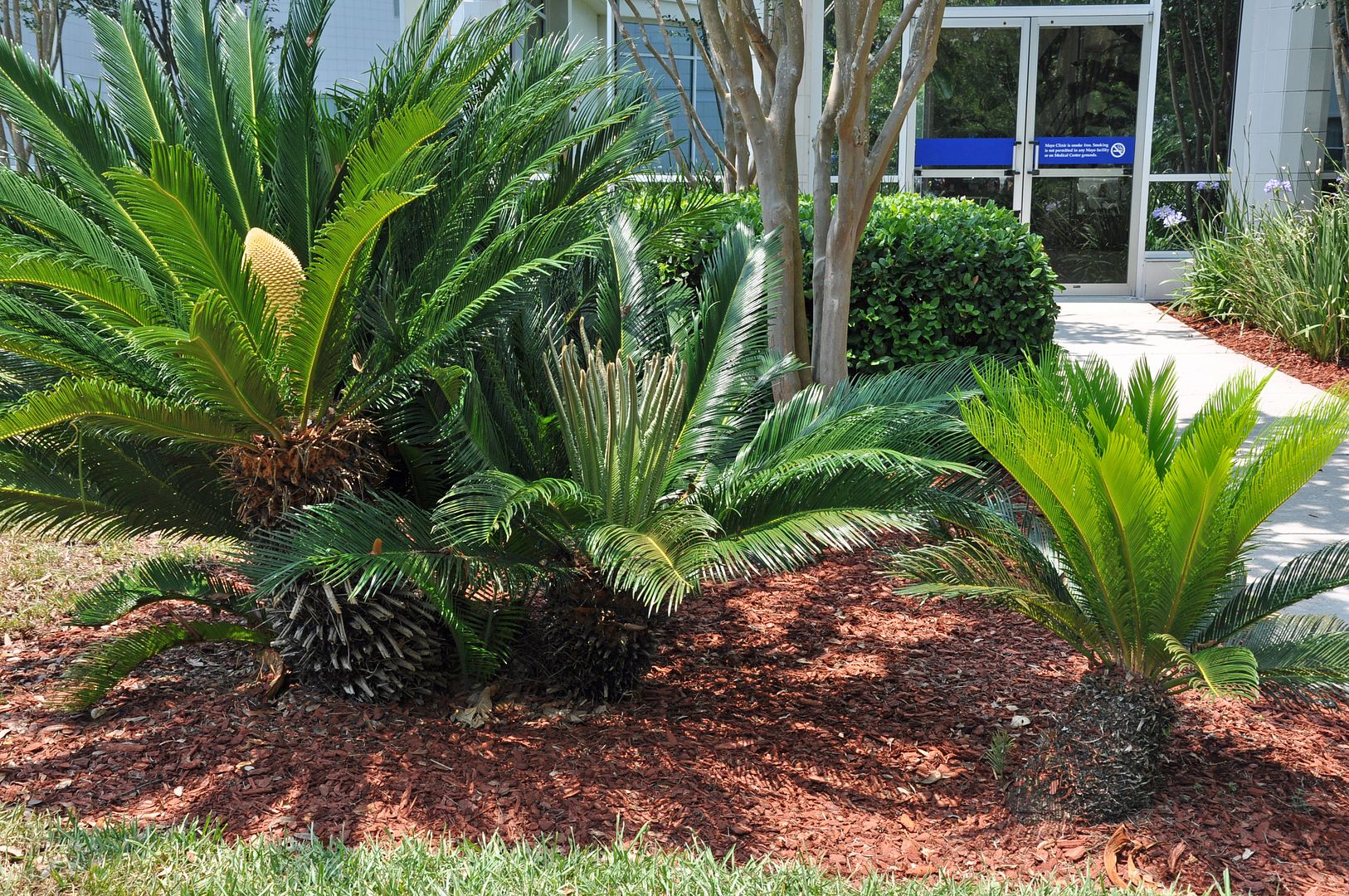
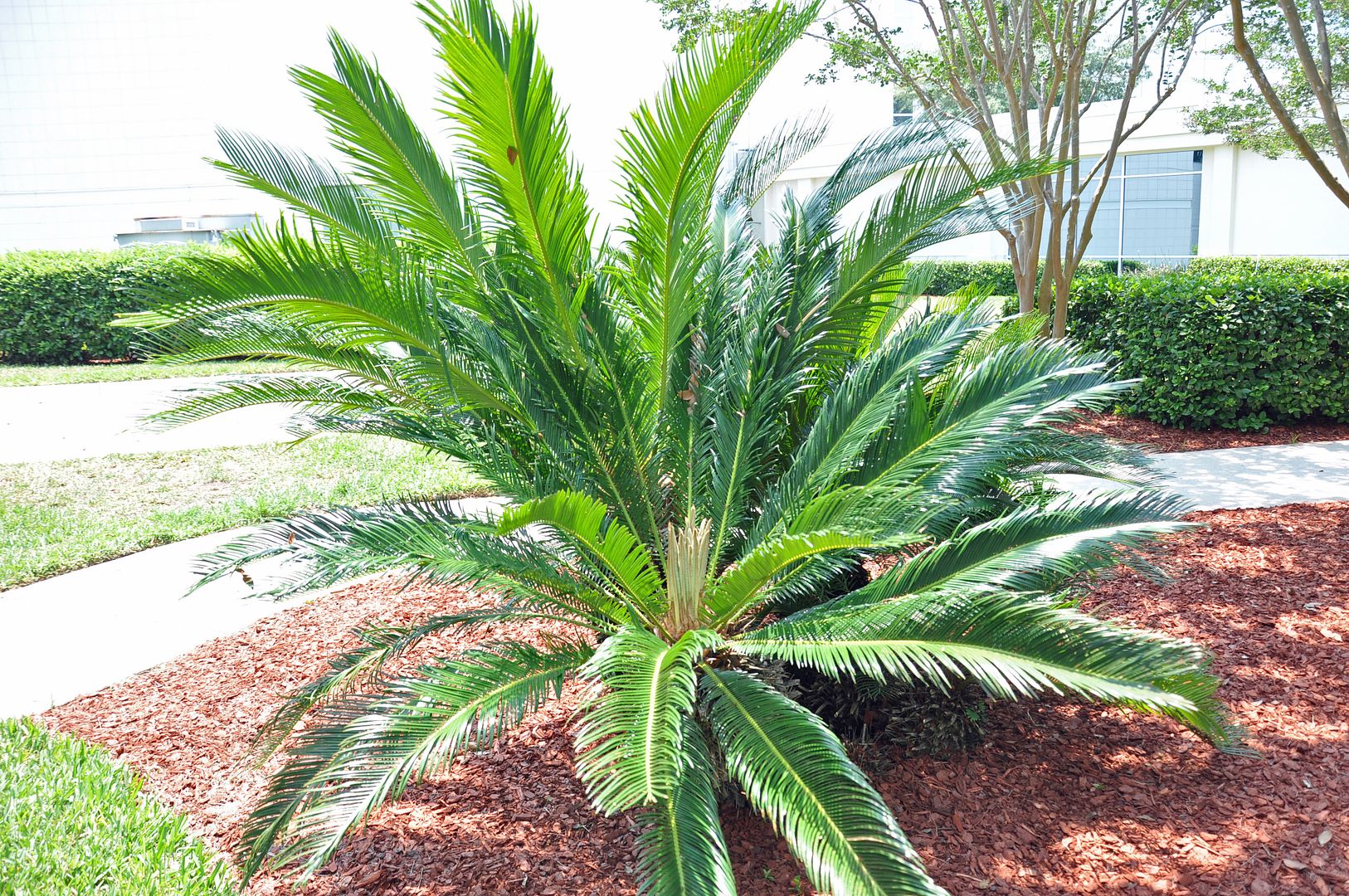

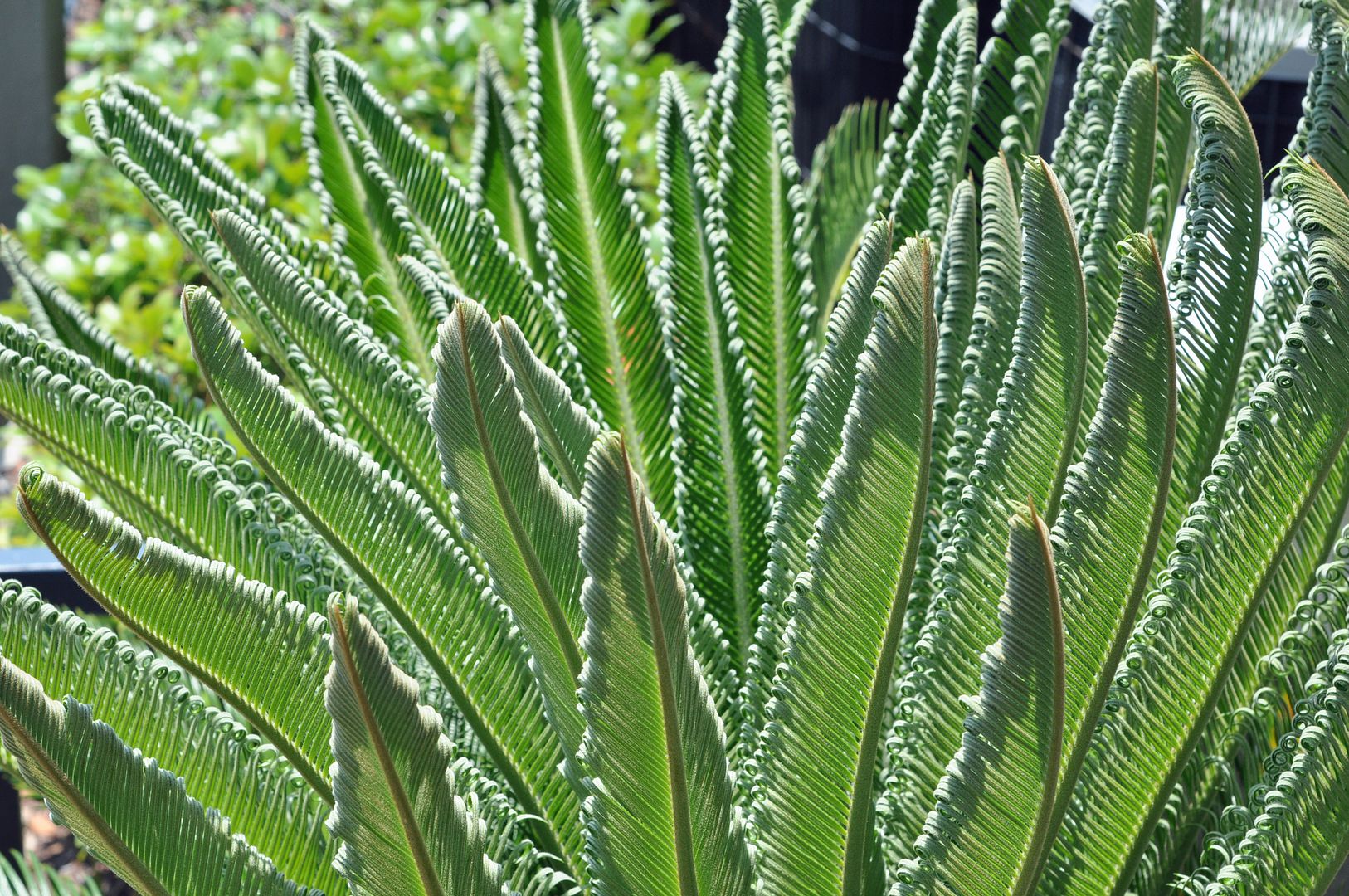
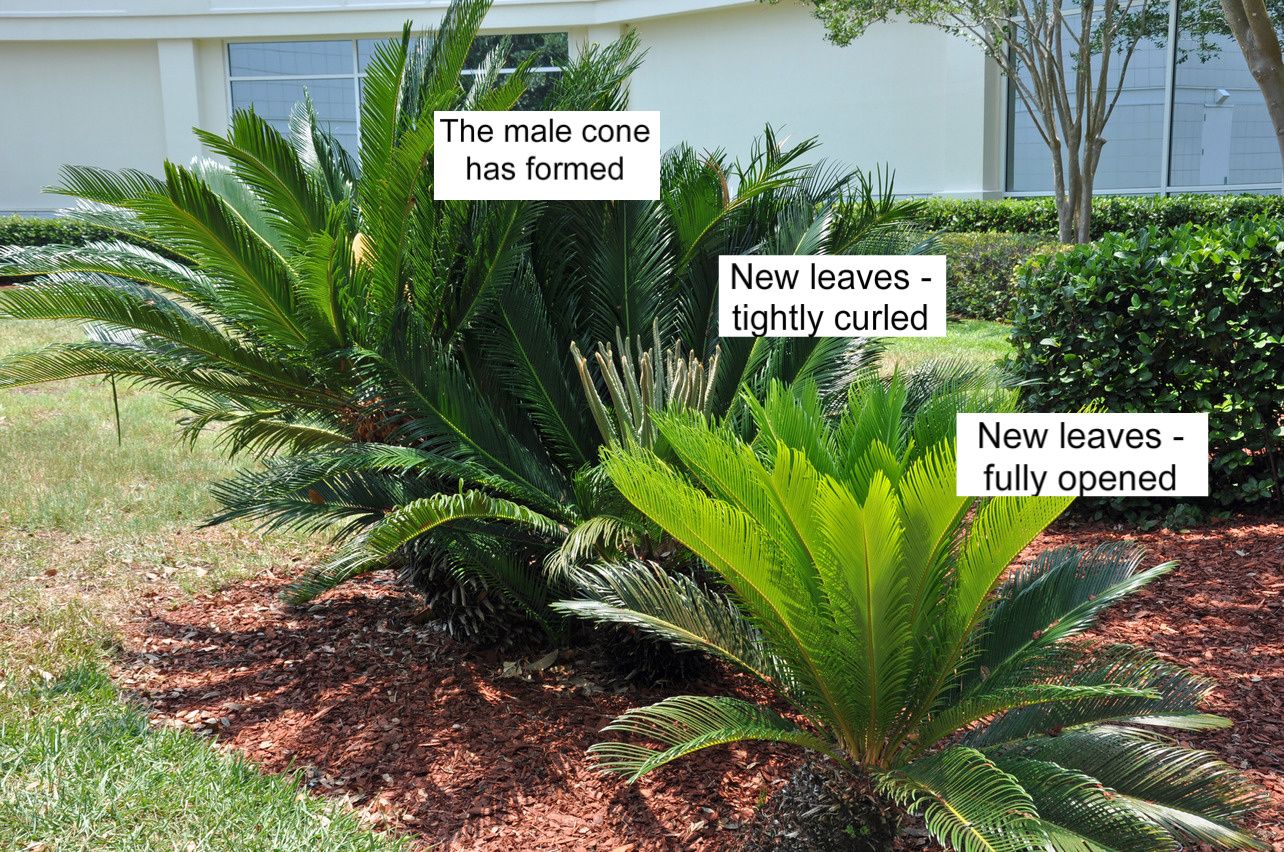

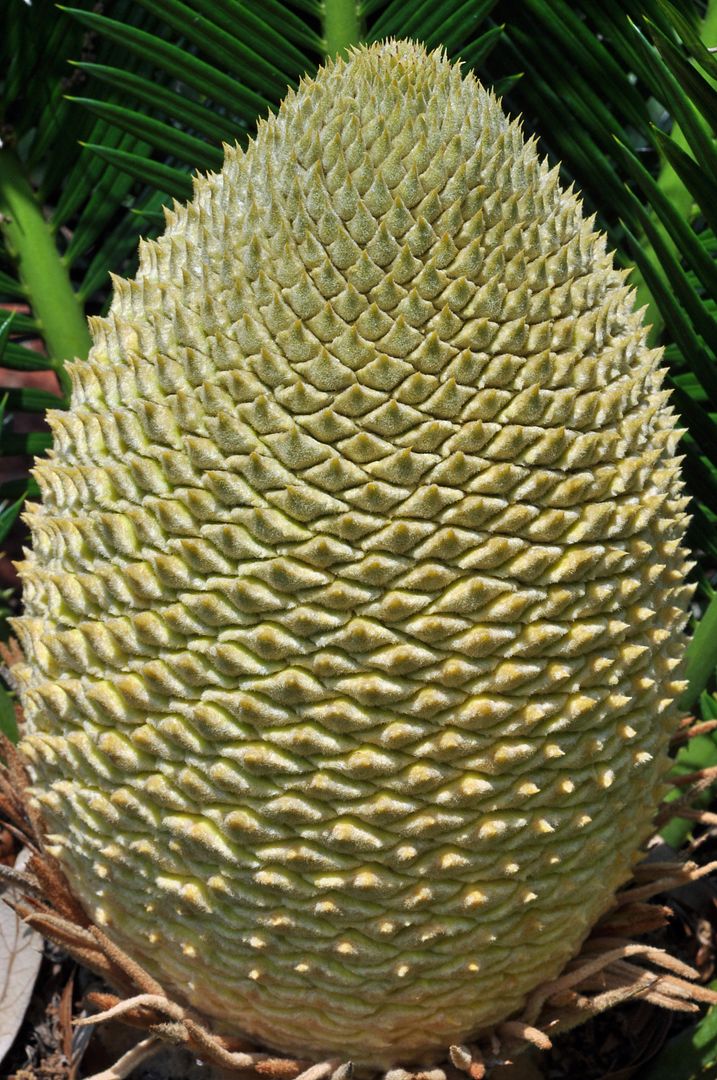
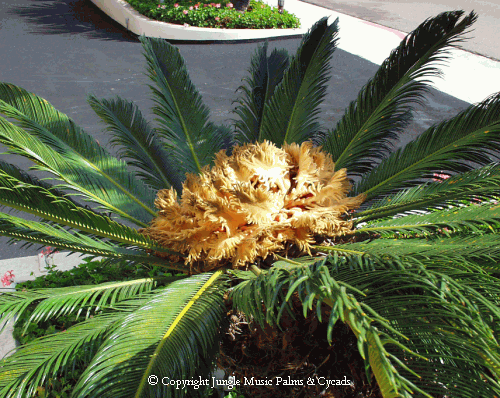
13 comments:
Seriously, go pro! Great photo essay!!!!!
Great SCIENCE lesson, Miss Kristin!!! Cycads are one of the four groups of gymnosperms - - - the other three being conifers, gingkos, and gnetophytes.
I would have guessed the cones the other way around - - - the big firm one as the female bearing the seeds and the frilly one as the male producing pollen. Live and learn!
The articles I found online refer to the sagos as "flowering" Biologically speaking, these are cones not flowers. Gymnosperms reproduce using cones - - - Angiosperms reproduce using flowers.
Most enlightening! Thank you all. I'll watch for them in Florida, starting tomorrow.
Wow. I'm in awe. Thanks for sharing. I just love all tropical plants!
Excellent information on the Sago.
Just love the pictures. You captured everything perfectly.
That is interesting information- they have to be 15 - 20 years old before they bloom?
That is wild!
Carolee
Come on home - mom blog
Working at home advice
They are lethal to dogs, cats, and small children. The smallest bit on any part of the plant is toxic and can cause death. My dog just died two nights ago from Sago palm poisoning.
Thank you so much for this post! I know it's been around for a while now but I'm fairly new to Florida and the house we bought has 2 sago palms. They aren't very healthy but I've been working on trying to save them. When I was just outside weeding the flower beds, I noticed the growth in the middle.
This made me drop the gloves and run for google! One of them is growing new leaves! I'm thrilled as the TLC might actually be working. I told the husband I'd work on them for a year. Either they would be perking up or pulling out. Maybe I can save them. I used your wonderful post to figure out what was coming out in the middle.
Thanks again. I may have to pop back in and read more later. Back to the dirt!
Kristi
I'm glad my post about the Sago Palm helped you out, Kristi! I hope you get yours healthy again.
Kristin
So thrilled to find your Blog on the amazing Saga and more so as one of our beautiful Saga's (we have six total in our AZ yard) now has a very large cone in the center of it and we had no clue what it was.
Thank you so much for this information. Peggy in AZ
My girlfriend has 2 sago's one named bob and the other robert jr & since we moved to SW florida they have tons of new growth and are thriving .
I would like to know what the female bloom looked like before it opened do you have such a photo? I have one and it was a center velvet spikey thing. then it turned to a round tight ball. I don't know what stage its in. the spikey thing started last year. the ball formed this year in the last couple of months.I am in California central valley.
Post a Comment